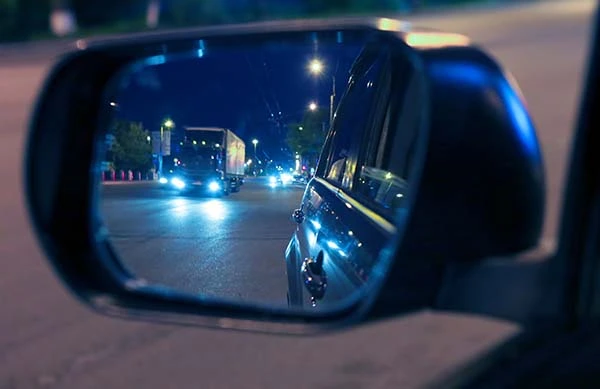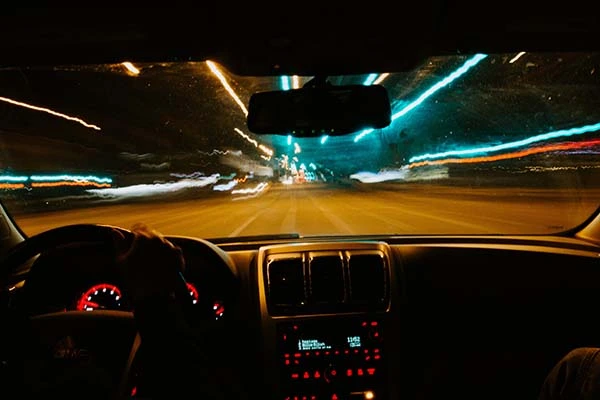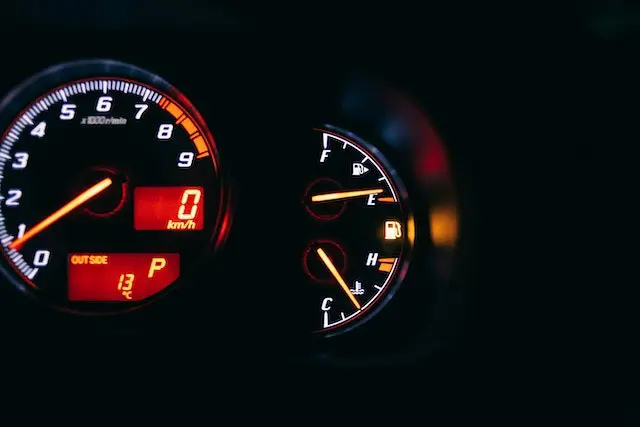Around 50 percent of motor vehicle accidents that occur after dark are fatal. Meaning that when the Sun goes down, the risk of car accidents goes up, that’s just the fact. The darkness and unfamiliar surroundings can be unsettling. But with a few simple tips for driving at night, you can make the experience a bit less stressful and more enjoyable. Here are some very useful tips for those sitting behind the wheel after dark.
When Driving at Night Be Extra Careful
State of a high alert is mandatory when you are behind the wheel during the night. The first thing you should remember is not to drink and drive. This one should be obvious, but it bears repeating. Even if you’ve had just a few drinks, your reaction time will be slowed, and your judgment will be impaired.
If you’re going to be drinking, make sure to have a designated driver or take a cab home. Be responsible, and you’ll avoid being just a fraction of the statistics. For example, daily, in the US, 29 people die in motor vehicle accidents caused by an alcohol-impaired driver.
Also, it can be tempting to fiddle with the radio or check your phone when you’re driving, but try to resist the urge. Distracted driving is one of the leading causes of accidents, so it’s best to keep your eyes on the road and your hands on the wheel.
Pedestrians are harder to see at night, so it’s important to be extra cautious when driving in areas where they might be present. I live in a big and busy area where people roam around the streets no matter the time of the day. That’s why I slow down and keep an eye out for people crossing the street or walking along the side of the road.

Find a Way to Combat Fatigue
Anyone who has ever driven for more than an hour or two knows how quickly fatigue can set in. Suddenly, your eyelids feel heavy, your thoughts start to wander, and it becomes difficult to keep your head up. If you’re not careful, drowsiness can quickly turn into dangerous sleepiness, and that’s when accidents happen.
I use a few simple things you can do to combat fatigue and stay alert while behind the wheel that you can also try when driving at night. Drinking coffee is the first and the most obvious way to stay alert. And it really does work. I, for example, didn’t have the proper cup holder, but with AUJEN Cup Holder Expander, all of my problems are gone now.
Listening to music or talk shows on the radio can help keep your mind active and engaged. I made myself a Spotify playlist that keeps me wide awake while driving. Sometimes I even sing out loud, which keeps me from dozing off. But if you don’t like to listen to music, you can always play some podcasts or some engaging talk shows.
Another thing you should consider, if you’re feeling particularly tired, is taking a break from driving. Find a rest stop or parking lot where you can get out of the car and walk around for a few minutes. Stretch your legs, get some fresh air, and grab a quick snack if you’re hungry. Then hop back in the car and hit the road refreshed and ready to go.
Pump the Brakes
When night falls, it’s important to respect the speed limit and pump the brakes. According to the National Highway Traffic Safety Administration (NHTSA), almost 37 percent of all driving fatalities that happen at night are due to lower visibility. By slowing down and being more cautious, you can help keep everyone on the road safe and avoid dangerous situations.
It’s clear that being behind the wheel at night requires extra caution. So, here are a few tips to help you stay safe that I never took for granted, and they kept me out of trouble:
- Respect the speed limit and drive slower than you would during the day.
- Be on the lookout for pedestrians, animals, and other potential hazards.
- Pull over and take a break if you begin to feel fatigued, or postpone your trip until the next morning.
By following these tips, you’ll not only keep yourself out of trouble but also will ensure that other people in traffic are safe while you are driving.

Clean Up Your Windshield
Let’s be honest, who hasn’t experienced the glare from oncoming traffic? That’s why it is necessary for a windshield to be clean when you are behind the wheel. If you didn’t take your car to a carwash before the drive, or you didn’t clean the windshield the last time you cleaned the seat belts or tried to clean the steering wheel – don’t panic. Just grab a towel and some cleaner – I always use the Chemical Guys cleaner and get to cleaning. After all the dirt is removed, just use a clean cloth to wipe it down, and you are good to go.
Do the Same With Your Mirrors
Similar to a dirty windshield, mucky mirrors can reflect and distort light, which can be a distraction. Clean your mirrors since dirty ones reflect the lights from the vehicles behind in a wider, diffused pattern that might cause glare in your eyes.
Also, try to position the exterior mirrors as well so you can move your head away from the light’s reflection. I like to slightly point them downward. By leaning my head slightly forward, I can see vehicles behind, but also keep the other vehicle’s headlights out of my eyes.

Aim the Headlights the Right Way
Even in brand-new cars, the headlights are occasionally uneven or directed lower than is really necessary. So, making the effort to aim them properly is worthwhile, for both you and other people involved in traffic. Keep in mind that before you get them pointed exactly, you might need to give it a few tries. Just be careful that the lights you aimed are not blinding oncoming traffic.
Have you ever tried to change the tail light or the headlight on your own? If you did, you probably cleaned them as well. If you didn’t, make a habit of cleaning the road filth from your headlights because even properly directed ones can provide a faint glow if something is blocking the light.
It’s also possible that the plastic lens coverings on an older vehicle have faded or become discolored with time. You should try to upgrade them and then order new incandescent bulbs because they produce less light.
Know When to Use High Beams on the Road
High beams are underused yet are highly useful on open roads or in rural areas. Just keep in mind to turn them off if you’re following another car and to dim them when you’re 500 feet or less from an approaching vehicle (so you don’t momentarily blind the other driver).
If and when you are shopping for a new vehicle, consider models with adaptive lighting systems, which automatically change your highlights in response to the presence of other vehicles. Many newer cars for off-road driving have this feature (if you are planning on exploring rural areas).
Avoid Staring at Oncoming Cars
I don’t know about you, but my ability to concentrate at night can be severely hampered by bright lights. Especially if my eyes are accustomed to the soft glow of the dashboard and the black road ahead.
It’s incredibly simple to become sidetracked and without even realizing it stare into a flashing road sign or the beams of a four-wheeler coming your way. That being said, try not to look at approaching high beams or other traffic lights on the road.
Look aside, even though you might occasionally find yourself attempting to ascertain whether the highlights on that oncoming car are actually on or simply misaimed. Frequently, you may move your side mirror to reflect light backward to warn the driver if the automobile in front of you is using its high lights while also keeping the reflection away from your eyes.

Dim the Lights on Your Dashboard
The dashboard dimmer switches in cars are there for a reason. There are many sources of distracting lighting inside a car that might impair your vision, including bright dashboard LEDs and sizable infotainment screens. By lowering the dash lights, you can reduce windshield reflections, which will improve nighttime visibility. You’ll also be able to better acclimate your eyes to the surrounding darkness.
Map lights and other interior lights, which frequently shine light across the cabin, can also be distracting while driving at night. Bright map lights are not a problem in every car – luxury automobiles (such as best cars for women or men) are superb at directing them – but it’s best to avoid using them altogether.

Get Some Anti-Reflective Lenses for Driving
Being behind the wheel at night can be a challenge if you don’t have the right glasses. If you find yourself squinting to see the road, it’s time to invest in a pair of anti-reflective lenses. They are specially treated to reduce the amount of glare from oncoming headlights. This can make a big difference in your ability to see the road and react to potential hazards. In addition, anti-reflective lenses can also help reduce eye fatigue, so you can keep driving all night long.
I’ve had a pair for a while now. They not only dull the impact of bright lights, but they also help with that uncomfortable feeling you get when staring at the road for far too long. Here are some of the highly recommended anti-reflective lenses you can buy.
| Name | Pros and Cons | Price Range |
| CR-39 lenses | Cheap, low durability | From $30 to $150 |
| Polycarbonate lenses | Light, but won’t work if you need glasses for near and far | From $10 to $205 |
| Progressives | Suitable for all distances | Around $30 |
| High-index lenses | They work with strong prescriptions | From $20 to $350 |
| High-definition lenses | Excellent peripheral vision | Around $300 |
Follow These Tips and You’ll Enjoy Your Night Drive
Night driving is definitely an acquired skill. After years of experience (and a few bumps and bruises), I’ve managed to get fairly decent at it. But even now, there are times when I find myself creeping along the road at 5 miles per hour, white-knuckled and sweaty, trying not to run into anything. If you’re like me, then you know that driving at night can be pretty scary sometimes! Hopefully, these tips will help make it a little less daunting. Stay safe out there!









